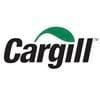Validation of the Energy Matrix of Guanidinoacetic Acid for Broiler Chickens: Effects on Performance, Carcass Traits, and Meat Quality
Author details:
The objective of this study was to validate the energy matrix of guanidinoacetic acid (AGA) in broiler diets, assessing its effects on performance, carcass traits, organ development, and meat quality. The experiment was conducted at the UNOESC Xanxerê poultry facility using 480 COBB broilers in a completely randomized design with three treatments: positive control (standard energy level), negative control (75 kcal/kg reduction in metabolizable energy—ME), and negative control + AGA (600 mg/kg). Male broilers in the positive control and negative control + AGA groups showed improved feed conversion, higher weight gain, and greater feed intake (p < 0.001) compared to the negative control group. A significant difference in relative liver weight (p = 0.037) was observed between the positive and negative control groups. Birds supplemented with AGA had higher blood glucose levels and lower levels of cholesterol (p = 0.013), triglycerides (p = 0.005), total proteins (p < 0.001), and creatinine (p = 0.056). Regarding meat quality, the AGA-supplemented group showed higher crude protein content and greater lipid peroxidation in breast meat. In conclusion, the inclusion of AGA using an energy matrix reduced by 75 kcal/kg ME is feasible, maintaining performance and carcass characteristics while improving meat quality in broiler chickens.
Keywords: guanidinoacetic acid; creatine; metabolizable energy; vegetable oil
1. Introduction
2. Materials and Methods
2.1. Animals, Housing, Diets, and Experimental Design




2.2. Performance, Carcass, and Organ Yield
2.3. Serum Biochemistry
2.4. Bromatological Composition and Lipid Peroxidation Analysis of Breast Meat
2.5. Statistical Analysis
3. Results
3.1. Performance

3.2. Organ Yield

3.3. Carcass and Cut Yield

3.4. Serum Biochemistry

3.5. Bromatological Composition and Lipid Peroxidation

4. Discussion
5. Conclusions
1. Goes, R.H.d.T.B.; Oliveira, E.R.d.A.; da Silva, J.A. Alimentos e Alimentação Animal. In Alimentos e Alimentação Animal; UFGD: Dourados, MS, Brazil, 2013; pp. 1–20.
2. Thirumalaisamy, G.; Muralidharan, J.; Senthilkumar, S.; Hema Sayee, R.; Priyadharsini, M. Cost-effective feeding of poultry. Int. J. Sci. Environ. Technol. 2016, 5, 3997–4005.
3. Hall, M.; Trojian, T.H. Creatine Supplementation. Curr. Sports Med. Rep. 2013, 12, 240–244. [CrossRef]
4. Dvoˇrák, P. The role of amino acids in ATP availability for myosin function. J. Sci. Food Agric. 1981, 32, 1013–1018.
5. Ibrahim, D.; El Sayed, R.; Abdelfattah-Hassan, A.; Morshedy, A.M. Creatine or guanidinoacetic acid? Which is more effective at enhancing growth; tissue creatine stores; quality of meat; and genes controlling growth/myogenesis in Mulard ducks. J. Appl. Anim. Res. 2019, 47, 159–166. [CrossRef]
6. Tossenberger, J.; Rademacher, M.; Németh, K.; Halas, V.; Lemme, A.J.P.S. Digestibility and metabolism of dietary guanidino acetic acid fed to broilers. Poul. Sci. 2016, 95, 2058–2067. [CrossRef]
7. Baker, D.H. Advances in protein–amino acid nutrition of poultry. Amino Acid 2009, 37, 29–41. [CrossRef]
8. Lemme, A.; Ringel, J.; Petri, A. Effects of graded levels of creatine and guanidinoacetic acid on performance and muscle creatine content in broilers. In Proceedings of the 16th European Symposium on Poultry Nutrition, Strasbourg, France, 26–30 August 2007; pp. 389–392.
9. EFSA (European Food Safety Authority). Safety and efficiency of guanidino acetic acid as feed additive for chickens for fattening. EFSA J. 2009, 988, 1–30. [CrossRef]
10. Van Der Poel, A.F.B.; Braun, U.; Hendriks, W.H.; Bosch, G. Stability of creatine monohydrate and guanidinoacetic acid during manufacture (retorting and extrusion) and storage of dog foods. Anim. Physiol. Anim. Nutr. 2019, 103, 1242–1250. [CrossRef]
11. Michiels, J.; Maertens, L.; Buyse, J.; Lemme, A.; Rademacher, M.; Dierick, N.A.; De Smet, S. Supplementation of guanidinoacetic acid to broiler diets: Effects on performance; carcass characteristics; meat quality; and energy metabolism. Poul. Sci. 2012, 91, 402–412. [CrossRef]
12. Wuertz, S.; Reiser, S. Creatine: A valuable supplement in aquafeeds? Rev. Aquac. 2023, 15, 292–304.
13. Rostagno, H.S.; Albino, L.F.T.; Hannas, M.I.; Donzele, J.L.; Sakomura, N.K.; Perazzo, F.G.; de Oliveira Brito, C. Tabelas brasileiras para aves e suınos. Composiçao de alimentos e exigências nutricionais, 4th ed.; UFV: Viçosa, MG, Brazil, 2017.
14. Brazil. Ministério da Ciência Tecnologia e Inovação. Resolução Normativa Nº 37–Diretriz Para Pratica De Eutanásia Do CONCEA– Brasília. 15 de Fevereiro de 2018. Available online: https://www.gov.br/mcti/pt-br/acompanhe-o-mcti/concea/arquivos/pdf/ legislacao/resolucao-normativa-no-37-de-15-de-fevereiro-de-2018.pdf/@@download/file (accessed on 20 May 2025).
15. Silva, D.J.; Queiroz, A.C. Análise de alimentos: Métodos químicos e biológicos, 3rd ed.; UFV: Viçosa, MG, Brazil, 2002; p. 235.
16. Association Of Official Analytical Chemists (AOAC). Official Methods of Analysis, 16th ed.; 3rd Revision; AOAC International: Gaithersburg, MD, USA, 1997.
17. Bligh, E.G.; Dyer, W.J. A raphid method of total lipid extraction and purification. Can. JBPY 1959, 37, 911–917. [CrossRef]
18. Osawa, C.C.; Felício, P.E.D.; Gonçalves, L.A. Teste de TBA aplicado a carnes e derivados: Métodos tradicionais; modificados e alternativos. Química Nova 2005, 28, 655–663. [CrossRef]
19. Pikul, J.; Leszczynski, D.E.; Kummerow, F.A. Evaluation of three modified TBA methods for measuring lipid oxidation in chicken meat. J. Agric. Food Chem. 1989, 37, 1309–1313.
20. Wyss, M.; Kaddurah-Daouk, R. Creatine and creatinine metabolism. Physiol. Rev. 2000, 80, 1107–1213. [CrossRef]
21. Wallimann, T. Introduction--creatine: Cheap ergogenic supplement with great potential for health and disease. Subcell. Biochem. 2007, 46, 1–16. [CrossRef] [PubMed]
22. Lemme, A.; Ringel, J.; Petri, A. Supplementation of guanidinoacetic acid to broiler diets: Effects on performance; carcass characteristics; meat quality; and creatine deposition. J. Anim. Physiol. Anim. Nutr. 2011, 95, 576–585. [CrossRef]
23. Majdeddin, M.; Braun, U.; Lemme, A.; Golian, A.; Kermanshahi, H.; De Smet, S.; Michiels, J. Guanidinoacetic acid supplementation improves feed conversion in broilers subjected to heat stress associated with muscle creatine loading and arginine sparing. Poult. Sci. 2020, 99, 4442–4453. [CrossRef]
24. Degroot, A.A.; Braun, U.; Dilger, R.N. Efficacy of guanidinoacetic acid on growth and muscle energy metabolism in broiler chicks receiving arginine-deficient diets. Poult. Sci. 2018, 97, 890–900. [CrossRef]
25. Khajali, F.; Wideman, R.F. Dietary arginine: Metabolic; environmental; immunological and physiological interrelationships. World Poult. Sci. J. 2010, 66, 751–766. [CrossRef]
26. Ahmadipour, B.; Khajali, F.; Sharifi, M.R. Effect of Guanidinoacetic Acid Supplementation on Growth Performance and Gut Morpholog yin Broiler Chickens. Poult. Sci. 2018, 6, 19–24. [CrossRef]
27. Córdova-Noboa, H.A.; Oviedo-Rondón, E.O.; Sarsour, A.H.; Barnes, J.; Sapcota, D.; López, D.; Gross, L.; Rademacher-Heilshorn, M.; Braun, U. Effect of guanidinoacetic acid supplementation on live performance, meat quality, pectoral myopathies and blood parameters of male broilers fed corn-based diets with or without poultry by-products. Poult. Sci. 2018, 97, 2494–2505. [CrossRef] [PubMed]
28. Esser, A.F.G.; Taniguti, T.L.; da Silva, A.M.; Vanroo, E.; Kaneko, I.N.; dos Santos, T.C.; Fernandes, J.I.M. Effect of supplementation of guanidinoacetic acid and arginine in vegetable diets for broiler on performance; carcass yield and meat quality. Semin. Ciênc.Agrár. 2018, 39, 1307–1318. [CrossRef]
29. Ale Saheb Fosoul, S.S.; Azarfar, A.; Gheisari, A.; Khosravinia, H. Energy utilisation of broiler chickens in response to guanidinoacetic acid supplementation in diets with various energy contents. Br. J. Nutr. 2018, 120, 131–140. [CrossRef] [PubMed]
30. Dilger, R.N.; Bryant-Angeloni, K.; Payne, R.L.; Lemme, A.; Parsons, C.M. Dietary guanidino acetic acid is an efficacious replacement for arginine for young chicks. Poult. Sci. 2013, 92, 171–177. [CrossRef] [PubMed]
31. Murakami, A.E.; Rodrigueiro, R.J.B.; Santos, T.C.; Ospina-Rojas, I.C.; Rademacher, M. Effects of dietary supplementation of meat-type quail breeders with guanidinoacetic acid on their reproductive parameters and progeny performance. Poult. Sci. 2014, 93, 2237–2244. [CrossRef]
32. Newsholme, P.; Procopio, J.; Lima, M.M.R.; Pithon-Curi, T.C.; Curi, R. Glutamine and glutamate—Their central role in cell metabolism and function. Cell Biochem. Funct. 2005, 23, 1–9. [CrossRef]
33. Florini, J.R.; Ewton, D.Z.; Coolican, S.A. Growth hormone and the insulin-like growth factor system in myogenesis. Endocr. Rev. 1996, 17, 481–517. [CrossRef]
34. Fernandes, J.I.M.; Esser, A.F.G.I.; Gonçalves, D.R.M.; Rorig, A.; Cristo, A.B.; Perini, R. Efeitos da suplementação de ácido guanidinoacético e L-arginina em dietas vegetais para frangos de corte submetidos a estresse térmico antes do abate. Rev. Bras. Cienc. Avic. 2017, 19, 429–436. [CrossRef]
35. Lehninger, A.L.; Nelson, D.L.; Cox, M.M. Lehninger Principles of Biochemistry, 4th ed.; W.H. Freeman and Company: New York, NY, USA, 2000; ISBN 978-0-7167-3051-0.
36. Kaneko, J.J. Serum proteins and the dysproteinemias. In Clinical Biochemistry of Domestic Animals; Academic Press: Cambridge, MA, USA, 1997; pp. 117–138.
37. Zabłocka, A.; Janusz, M. The two faces of reactive oxygen species. AHEM 2008, 62, 118–124. [PubMed]
38. Estévez, M. Oxidative damage to poultry: From farm to fork. Poul. Sci. 2015, 94, 1368–1378. [CrossRef]
39. Liu, T.; He, W.; Yan, C.; Qi, Y.; Zhang, Y. Roles of reactive oxygen species and mitochondria in cadmium-induced injury of liver cells. Toxicol. Ind. Heal. 2011, 27, 249–256. [CrossRef]
40. Mello Filho, A.C.; Hoffmann, M.E.; Meneghini, R. Cell killing and DNA damage by hydrogen peroxide are mediated by intracellular iron. Biochem. J. 1984, 218, 273–275. [CrossRef] [PubMed]
41. Hershko, C. Mechanism of iron toxicity and its possible role in red cell membrane damage. Semin. Hematol. 1989, 26, 277–285.
42. Wang, L.S.; Shi, B.M.; Shan, A.S.; Zhang, Y.Y. Effects of guanidinoacetic acid on growth performance; meat quality and antioxidation in growing-finishing pigs. J. Anim. Vet. Adv. 2012, 11, 631–636. [CrossRef]
43. Sestili, P.; Martinelli, C.; Bravi, G.; Piccoli, G.; Curci, R.; Battistelli, M.; Falcieri, E.; Agostini, D.; Gioacchini, A.M.; Stocchi, V. Creatine supplementation affords cytoprotection in oxidatively injured cultured mammalian cells via direct antioxidant activity. Free. Radic. Biol. Med. 2006, 40, 837–849. [CrossRef] [PubMed]
44. Sestili, P.; Barbieri, E.; Martinelli, C.; Battistelli, M.; Guescini, M.; Vallorani, L.; Stocchi, V. Creatine supplementation prevents the inhibition of myogenic differentiation in oxidatively injured C2C12 murine myoblasts. Mol. Nutr. Food Res. 2009, 53, 1187–1204. [CrossRef]
45. Percário, S.; Domingues, S.P.D.T.; Teixeira, L.F.M.; Vieira, J.L.F.; de Vasconcelos, F.; Ciarrocchi, D.M.; Almeida, E.D.; Conte, M. Effects of creatine supplementation on oxidative stress profile of athletes. J. Int. Soc. Sports Nutr. 2012, 9, 1–8. [CrossRef]




Indeed, very good work and a very comprehensive study, documenting the effects and potential of AGA. Otherwise, one may wonder if an energy correction of 75.0 kcal/kg ME is not too ambitious? From the performance table on LBW and FCR, we see that the AGA group is bridging only about half of the gap between the negative and positive control. FCR are 1.62b; 1.68a and 1.65ab, respectively. Maybe an energy matrix value of 30-35 kcal might be more prudent?





















